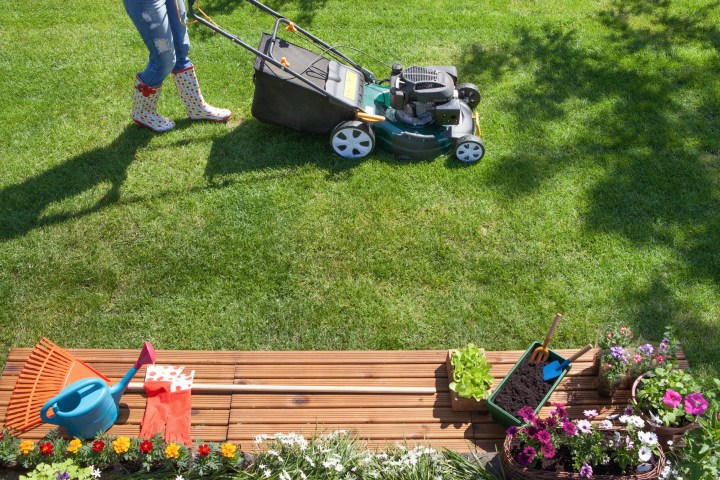
Don’t over-mow
When it comes to lawn care, one of the biggest mistakes individuals make is over-mowing. Many people unwittingly cut their grass far too short with each mow. While this means you may be able to cut the grass less frequently, it certainly will not benefit your lawn. With each mow, you should only clip about one third of the grass blade.
Cutting more than this can create an unhealthy buildup of clippings that take longer to decompose and also stunt growth rates. Allowing your grass to grow longer encourages root growth, enabling the system to reach water deeper in the soil. With this in mind, adjust the height of your blades with each mowing to ensure the proper cut. If you’re in the market for a new lawnmower, these robotic options make it exceedingly easy to clip the right amount of grass at regular intervals.
Keep your blades sharp
While sharp mower blades cleanly slash through grass with each stroke, dull blades have a tendency to shred grass unevenly. “A dull mower blade will shred grass blades, resulting in a poor quality of cut and potentially creating entryways for disease,” according to the John Deere lawn care experts. With this in mind, it is paramount use sharp blades when you mow. Manufacturers recommend sharpening your blades after about 10 hours of use.

Timing is key
Regular watering is crucial to maintaining a healthy lawn, and it’s best to water lawns in the early morning. (Before 10 a.m. is ideal, say John Deere’s experts.) This will prevent your grass from being damp for an extended period of time and also ensure the bulk of the moisture isn’t immediately evaporated. Watering later in the evening should be avoided if possible. Grass left wet overnight can encourage fungal disease growth. You should water your lawn long enough to allow moisture to sink six inches into the soil. Needless to say, you’re probably over-watering your lawn, and there are apps to help you monitor this as well.
Don’t over-fertilize
Maintaining a healthy lawn is all about balance. While fertilizing your lawn is an easy way to add nutrients to the soil, over-fertilizing can “burn” your yard. The ideal amount of fertilizer to use varies for each grass type. When it comes to nitrogen fertilizers, it is recommended to use about one pound of actual nitrogen per 1,000 square feet of turf. Lowe’s has created a helpful fertilizer calculator to help you determine how much fertilizer to purchase for each treatment.
Mix it up
From the weight of the bulky lawnmower cruising along the surface to the accumulation of excessive clippings, the act of mowing itself may be a detrimental to lawn health. Try to vary the mowing pattern with each cut to reduce wear on the turf. You should also choose an efficient pattern to minimize your literal and metaphorical footprint.


